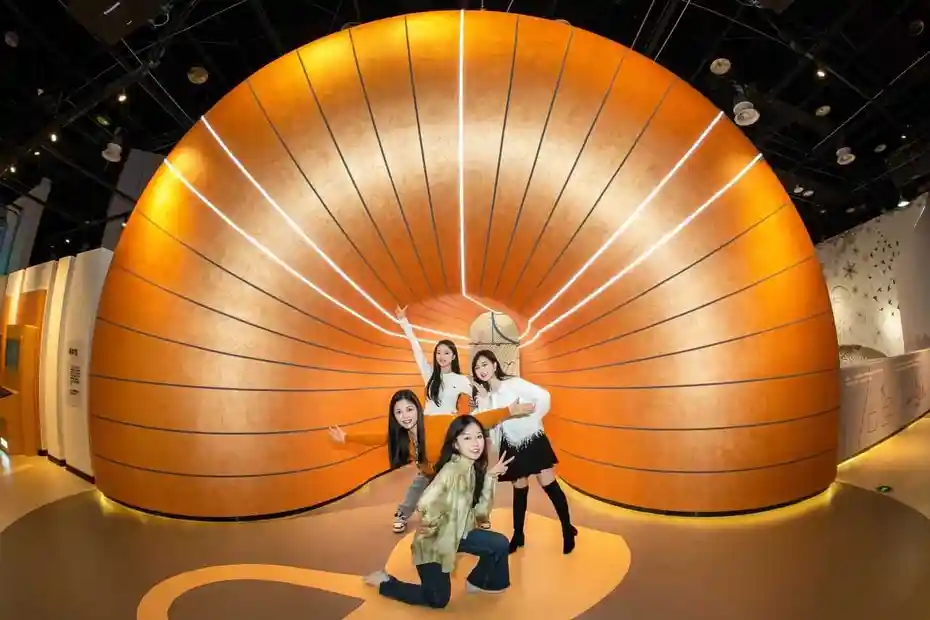Introduction: Why the Xiamen Science and Technology Museum Stands Out
The Xiamen Science and Technology Museum is more than just a destination for curious minds. It’s a gateway to hands-on learning, interactive discovery, and scientific inspiration. Located on the scenic island of Xiamen in Fujian Province, this modern institution blends education with entertainment in a way that appeals to visitors of all ages.
For families, students, educators, or solo travelers interested in science, the museum offers immersive exhibits that go beyond textbooks. From robotics to space exploration, it brings complex concepts to life through engaging displays and real-time experiments.
This guide provides everything you need before visiting. You’ll learn about opening hours, ticket options, must-see exhibits, accessibility features, and nearby attractions. Whether planning a school trip or a weekend outing, this resource ensures a smooth and enriching experience.
With increasing global interest in STEM education, institutions like the Xiamen Science and Technology Museum play a vital role. They make science accessible and exciting—especially for younger audiences who may one day become innovators themselves.
Let’s explore what makes this museum a standout attraction in southern China.
What Makes the Xiamen Science and Technology Museum Unique?
Unlike traditional museums filled with static displays, the Xiamen Science and Technology Museum emphasizes interactivity. Visitors don’t just observe—they touch, test, and experiment.
One key feature is its focus on experiential learning. Exhibits are designed so users can manipulate variables and see immediate results. For example, children can build simple circuits or simulate weather patterns using touchscreen controls.
Another distinguishing factor is the integration of local innovation. The museum highlights technological advancements from Fujian Province, connecting regional achievements to broader scientific principles.
The building itself reflects modern architecture with eco-friendly design elements such as solar panels and natural ventilation systems. These features align with the museum’s mission of promoting sustainable development.
Additionally, multilingual signage—including English—is available throughout most galleries. This supports international visitors and enhances inclusivity.
Compared to other science centers in China, the Xiamen Science and Technology Museum balances depth and accessibility well. Complex topics are broken down without oversimplifying, making them understandable yet intellectually stimulating.
Key Features at a Glance
- Interactive Zones: Over 10 themed areas covering physics, biology, AI, and environmental science.
- Languages Supported: Mandarin, English, and select audio guides in Japanese and Korean.
- Accessibility: Wheelchair ramps, tactile paths, and staff assistance available.
- Family-Friendly: Dedicated play zones for children under 8.
- Event Hosting: Spaces for workshops, school field trips, and STEM camps.
These attributes contribute to its growing reputation both locally and internationally.
Planning Your Visit: Hours, Tickets & Location
Before heading out, check the official schedule. The Xiamen Science and Technology Museum operates Tuesday through Sunday, from 9:00 AM to 5:00 PM. It closes on Mondays for maintenance and exhibit updates.
Admission fees vary by age group and residency status:
| Visitor Type | Price (CNY) |
|---|---|
| Adults | 60 |
| Students (with ID) | 30 |
| Children (under 1.2m) | Free |
| Seniors (65+) | Free |
Tickets can be purchased online via the museum’s website or mobile app. Booking ahead reduces wait times and guarantees entry during peak seasons like holidays and summer breaks.
The museum is located at No. 1 Haitan Road, Siming District, Xiamen. Public transportation options include Bus Routes 29, 47, and 86, which stop within a five-minute walk of the entrance.
If driving, there’s an underground parking facility with hourly rates starting at 5 CNY. Electric vehicle charging stations are also available.
Tips for a Smooth Experience
- Avoid weekends if possible; weekdays are less crowded.
- Arrive early to maximize time in popular sections.
- Download the museum map before arrival.
- Carry water and snacks—limited food options inside.
Proper planning ensures you get the most out of your visit.
Top Exhibits You Can’t Miss
Every visitor should prioritize certain galleries known for their impact and engagement level. These exhibits define the core identity of the Xiamen Science and Technology Museum.
First, the **Space Exploration Hall** simulates lunar landings and Mars rover missions. Using VR headsets, guests experience zero-gravity environments and control robotic arms in real time.
Next, the **Robotics Lab** showcases humanoid robots capable of facial recognition and conversation. Daily demonstrations allow audiences to interact directly with AI-powered machines.
The **Energy Innovation Zone** illustrates renewable technologies like wind turbines and hydroelectric dams. Interactive models let users adjust blade angles or water flow to observe changes in power output.
Children love the **Mini City**, a scaled-down urban environment where they role-play jobs like firefighters, doctors, and engineers. It teaches civic responsibility while reinforcing STEM skills.
Lastly, the **Biodiversity Tunnel** uses projection mapping to display endangered species native to Southeast China. Motion sensors trigger animal sounds and behaviors as visitors pass through.
Each exhibit combines storytelling, technology, and education seamlessly.
Why These Exhibits Matter
These spaces do more than entertain. They spark curiosity, promote critical thinking, and support classroom learning objectives.
Teachers often bring students here to supplement lessons in physics, ecology, and computer science. The museum even offers curriculum-aligned activity sheets upon request.
Educational Programs and Workshops
Beyond self-guided tours, the Xiamen Science and Technology Museum runs structured programs for different age groups.
Weekly Saturday Science Sessions target kids aged 6–12. Topics rotate monthly and include coding basics, chemical reactions, and simple machine construction. Each session lasts 90 minutes and includes take-home kits.
For teens and adults, there are evening lectures featuring researchers from Xiamen University and local tech firms. Recent themes include quantum computing trends and ethical AI development.
School partnerships enable customized field trips with guided tours and lab activities. Teachers can coordinate visits months in advance and receive pre-visit teaching materials.
During summer, the museum hosts week-long STEM camps focused on robotics, environmental monitoring, and digital design. These fill up quickly, so early registration is advised.
All programs emphasize inquiry-based learning. Rather than lecturing, facilitators pose questions and encourage experimentation.
Program Schedule Overview
| Saturday Science | 6–12 years | Weekly | 1.5 hrs |
| Teen Tech Talks | 13–18 years | Bi-weekly | 1 hr |
| Adult Lecture Series | 18+ | Monthly | 1.5 hrs |
| Summer STEM Camp | 8–16 years | Seasonal | Full-day, 5 days |
Participation boosts long-term interest in science careers.
Accessibility and Visitor Services
The Xiamen Science and Technology Museum prioritizes inclusive access. Ramps, elevators, and wide corridors accommodate wheelchairs and strollers.
Hearing-impaired guests benefit from captioned videos and visual alert systems. Some exhibits offer braille descriptions and tactile models for blind visitors.
Staff members undergo regular training in disability awareness. Trained volunteers are stationed across floors to assist when needed.
Rest areas with seating and quiet zones help prevent sensory overload—especially useful for neurodivergent individuals.
Lockers are available near the entrance for storing bags and coats. Free Wi-Fi allows visitors to access digital guides or share experiences online.
A small café serves light meals, coffee, and allergy-friendly snacks. While not extensive, it meets basic dietary needs.
Lost-and-found services and first aid are managed at the main information desk, open throughout operating hours.
Family Support Features
- Baby-changing stations in restrooms.
- Stroller rentals (free of charge).
- Nursing room with privacy curtains.
- Kid-sized restrooms with step stools.
These thoughtful details enhance comfort for diverse visitor groups.
Nearby Attractions to Combine With Your Trip
Visiting the museum fits well into a full day of exploration. Several nearby sites complement its educational theme.
Gulangyu Island lies just 20 minutes away by ferry. Known for its colonial architecture and piano museum, it offers cultural contrast to the tech-focused experience.
Xiamen University’s campus is only 15 minutes by bus. Its beautiful lakeside setting and botanical garden provide a peaceful retreat after mental stimulation indoors.
For outdoor enthusiasts, Nanputuo Temple sits adjacent to the university. Hikers can climb the surrounding hills for panoramic views of the city and sea.
Shopping and dining options abound at Zhongshan Road Pedestrian Street. Try local specialties like oyster omelets or peanut soup while exploring historic shopfronts.
Combining these stops creates a balanced itinerary blending nature, culture, and innovation.
Ideal One-Day Itinerary
- Morning: Arrive at Xiamen Science and Technology Museum (9:00 AM).
- Lunch: Café inside or quick bite nearby (12:30 PM).
- Afternoon: Walk to Xiamen University and Nanputuo Temple (1:30 PM).
- Evening: Ferry to Gulangyu Island or shopping at Zhongshan Road (4:00 PM).
Efficient routing maximizes enjoyment.
How to Maximize Learning During Your Visit
To turn a casual tour into a meaningful learning experience, adopt a few smart strategies.
Start by setting goals. Ask yourself: What do I want to learn? Is it how robots work? Or what renewable energy looks like in practice?
Use the museum map to plan your route. Prioritize exhibits aligned with your interests. Avoid aimless wandering—it wastes time and energy.
Engage with staff and demonstrators. Most are happy to explain concepts or answer questions. Don’t hesitate to ask for clarification.
Take notes or use voice memos to record insights. Photos are allowed in most areas (except temporary exhibitions), helping reinforce memory later.
Encourage discussion, especially with children. Ask open-ended questions like “Why do you think this works?” or “How could we improve this design?”
Finally, reflect afterward. Discuss key takeaways over dinner or journal about new ideas sparked.
Active participation deepens understanding far beyond passive viewing.
Conclusion: A Must-Visit Destination for Curious Minds
The Xiamen Science and Technology Museum delivers a powerful blend of education, innovation, and fun. Its dynamic exhibits, strong programming, and visitor-centered design set it apart as a leading science center in coastal China.
Whether you’re a parent, educator, student, or lifelong learner, the museum offers valuable experiences that extend beyond a single visit. The knowledge gained here can inspire future projects, career choices, or simply deeper appreciation for how the world works.
Plan your trip carefully. Use online tools to book tickets and review schedules. Come prepared with questions and a willingness to engage.
As science continues to shape our lives, places like this play a crucial role in public understanding. Supporting such institutions helps build a more informed and innovative society.
Consider returning for special events or seasonal exhibits. Each visit reveals something new—and keeps curiosity alive.



